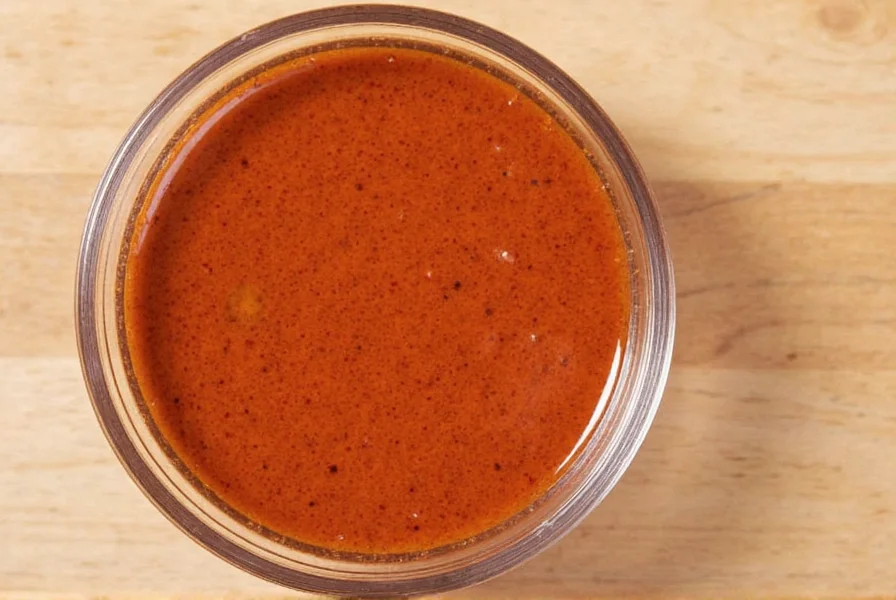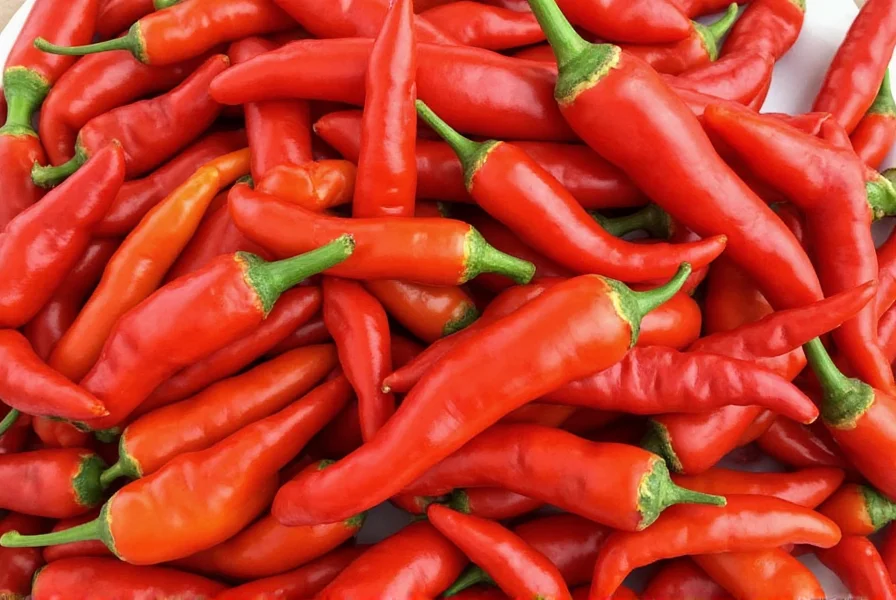Ancho chili peppers are mild, with a Scoville rating of 1,000–1,500 SHU—significantly less hot than jalapeños or habaneros. They offer a smoky, sweet flavor perfect for sauces and stews without overwhelming heat.
Table of Contents
- Introduction: What Are Ancho Chili Peppers?
- Understanding the Heat Level of Ancho Chili Peppers
- Cooking with Ancho Chili Peppers: Tips and Tricks
- Buying Guide: How to Choose the Best Ancho Chili Peppers
- Comparison: Ancho vs. Other Chili Peppers
- Frequently Asked Questions About Ancho Chili Peppers
- Conclusion: Are Ancho Chili Peppers Hot? The Final Verdict
Understanding the Heat Level of Ancho Chili Peppers
Now, the big question: are ancho chili peppers hot? The short answer is yes—but not in the same way as habaneros or ghost peppers. Let's break it down.
Scoville Heat Units (SHU)
The Scoville scale measures the heat of chili peppers based on capsaicin content. Ancho chili peppers typically range between 1,000 to 1,500 SHU, which puts them in the category of mild to medium heat. For reference, bell peppers are around 0 SHU, while jalapeños are about 2,500–8,000 SHU. So ancho peppers are definitely spicy, but not overwhelming.

How Does This Compare to Other Chilies?
Let's compare ancho peppers to other common chilies:
| Chili Pepper | Heat Level (SHU) | Flavor Profile |
|---|---|---|
| Ancho | 1,000 - 1,500 | Smoky, sweet, slightly fruity |
| Jalapeño | 2,500 - 8,000 | Peppy, grassy, sometimes bitter |
| Chipotle | 2,500 - 8,000 | Smoky, tangy, intense |
| Habanero | 100,000 - 350,000 | Fiery, citrusy, floral |
So, while ancho peppers are milder than jalapeños and chipotles, they still offer a pleasant kick that can enhance dishes without overpowering them.
Cooking with Ancho Chili Peppers: Tips and Tricks
If you're wondering are ancho chili peppers hot, the answer is yes—but they're also incredibly versatile. Here are some practical tips for using them in your kitchen:
- Rehydrate Before Use: Dried ancho peppers need to be rehydrated before use. Simply soak them in warm water for 20–30 minutes until they become pliable.
- Use in Sauces: Ancho peppers are a staple in mole sauce, where their sweetness balances out the richness of chocolate and spices.
- Add to Stews and Soups: They bring depth and warmth to dishes like pozole or chicken enchiladas.
- Make a Chile Paste: Blend rehydrated ancho peppers with garlic, onion, and olive oil for a flavorful base for salsas or marinades.
- Roast for Extra Flavor: Roasting ancho peppers adds a smoky, caramelized taste that elevates any dish.
One thing to keep in mind: are ancho chili peppers hot depends on how you prepare them. The heat is more concentrated in the seeds and membranes, so if you want to reduce the heat, remove those parts before cooking.
Buying Guide: How to Choose the Best Ancho Chili Peppers
Whether you're shopping at a local market or online, choosing quality ancho peppers can make a big difference in your cooking. Here's what to look for:
Look for Quality
When buying dried ancho peppers, choose ones that are dark red, smooth, and free from mold or moisture. Avoid peppers that are too brittle or have a musty smell.
Consider the Source
Some ancho peppers come from specific regions, such as Oaxaca or Puebla in Mexico, where they are traditionally grown. These may have a richer flavor and better quality than mass-produced versions.
Check for Freshness
If you're buying pre-made ancho chili powder or paste, look for products that are sealed and have a long shelf life. Make sure the packaging is intact and doesn't have any signs of exposure to moisture or air.
Think About Usage
For beginners, it's best to start with whole dried peppers. As you gain confidence, you can experiment with powdered ancho or ready-made sauces.
Comparison: Ancho vs. Other Chili Peppers
Now that we've covered are ancho chili peppers hot, let's compare them to other popular chilies to see how they stack up.
Ancho vs. Pasilla
Pasilla peppers are often confused with ancho because they're both dried poblanos. However, pasillas tend to be spicier (around 1,000–2,500 SHU) and have a more pronounced smoky flavor. Ancho peppers are sweeter and less fiery.
Ancho vs. Guajillo
Guajillo peppers are another common choice in Mexican cooking. They are slightly hotter than ancho (about 2,500–5,000 SHU), with a tangy, tomato-like flavor. Ancho is more about depth and sweetness.
Ancho vs. Chipotle
Chipotle peppers are smoked jalapeños, so they're much hotter (2,500–8,000 SHU) and have a smokier, more intense flavor. Ancho is milder and more balanced.

Frequently Asked Questions About Ancho Chili Peppers
Are ancho chili peppers hot?
Yes, ancho chili peppers do have heat, but they fall in the mild to medium range on the Scoville scale with 1,000-1,500 SHU. They provide a subtle warmth rather than intense heat, making them accessible for those who prefer milder spicy foods. The heat is more concentrated in the seeds and membranes, so you can control the spiciness by removing these parts before cooking.
How do ancho peppers compare to jalapeños in heat?
Ancho peppers are significantly milder than jalapeños. Anchos range from 1,000-1,500 SHU while jalapeños range from 2,500-8,000 SHU. This means jalapeños can be up to 8 times hotter than ancho peppers. If you find jalapeños too spicy, ancho peppers offer a more subtle heat with complex flavor notes.
What does an ancho chili pepper taste like?
Ancho peppers have a rich, complex flavor profile described as sweet, earthy, and slightly fruity with notes of dried fruit, coffee, and chocolate. They also have a distinctive smoky character that makes them popular in many Mexican dishes. The flavor is what makes them special—their mild heat serves to enhance rather than dominate the dish.
Can I substitute ancho peppers with other chili peppers?
Yes, but with flavor differences. Guajillo peppers are the closest substitute in Mexican cuisine, though slightly hotter. Mulato peppers are similar but earthier. For mild heat with different flavor, try using sweet paprika with a pinch of cayenne. If you need to replace ancho in a recipe but want similar heat level, a combination of paprika and a small amount of cayenne would work best.
How should I store dried ancho peppers?
Store dried ancho peppers in an airtight container in a cool, dark place. Properly stored, they can last 6-12 months. For longer storage, keep them in the freezer where they can maintain quality for up to 2 years. Avoid storing them in humid environments as moisture can cause mold growth. To check if they're still good, look for vibrant color and a fragrant smell—stale peppers will be brittle and lack aroma.
What dishes are ancho peppers commonly used in?
Ancho peppers are essential in traditional Mexican mole sauces, where they provide depth and balance to the complex blend of ingredients. They're also commonly used in enchilada sauces, salsas, stews like pozole, and as a rub for meats. Their mild heat and rich flavor make them versatile for both traditional Mexican dishes and fusion cuisine where a subtle spicy note is desired.
Conclusion: Are Ancho Chili Peppers Hot? The Final Verdict
So, to answer the question: are ancho chili peppers hot? Yes, they do have heat, but it's mild and manageable. With a Scoville rating of 1,000 to 1,500, they fall into the mild to medium range and are perfect for those who enjoy a little kick without the burn.
Whether you're cooking traditional Mexican dishes or experimenting with new flavors, ancho chili peppers add a unique depth that can elevate your meals. Just remember to handle them carefully, especially if you're new to chili peppers, and always consider the heat level based on your personal tolerance.
In short, are ancho chili peppers hot? Yes—but they're also delicious, versatile, and worth exploring for anyone who loves the world of spices.










 浙公网安备
33010002000092号
浙公网安备
33010002000092号 浙B2-20120091-4
浙B2-20120091-4